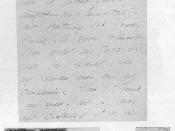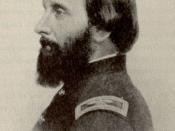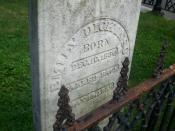Dickinson, Emily Elizabeth (1830-1886), America's best-known female poet and one of the foremost authors in American literature. Dickinson's simply constructed yet intensely felt, acutely intellectual writings take as their subject issues vital to humanity: the agonies and ecstasies of love, sexuality, the unfathomable nature of death, the horrors of war, God and religious belief, the importance of humor, and musings on the significance of literature, music, and art.
Born in Amherst, Massachusetts, Dickinson was the middle child of a prominent lawyer and one-term United States congressional representative, Edward Dickinson, and his wife, Emily Norcross Dickinson. From 1840 to 1847 she attended the Amherst Academy, and from 1847 to 1848 she studied at the Mount Holyoke Female Seminary (now Mount Holyoke College) in South Hadley, a few miles from Amherst. With the exception of a trip to Washington, D.C., in the late 1850s and a few trips to Boston for eye treatments in the early 1860s, Dickinson remained in Amherst, living in the same house on Main Street from 1855 until her death.
During her lifetime, she published only about 10 of her nearly 2,000 poems, in newspapers, Civil War journals, and a poetry anthology. The first volume of Poems of Emily Dickinson, edited by Thomas Wentworth Higginson and Mabel Loomis Todd, was published in 1890, after Dickinson's death.
The notion that Dickinson was extremely reclusive is a popular one, but it is at best a partial truth. Dickinson's first editors molded their descriptions of her and her work to conform to 19th-century stereotypes of women writers and to downplay qualities that did not match the conventional conception. Popular depictions of Dickinson, as in the play The Belle of Amherst (1976), have perpetuated a belief that she always dressed in white, was sensitive and reclusive in nature, and had an unrequited...



Duplicate submission
I just got through reading this same biography by you.
11 out of 13 people found this comment useful.